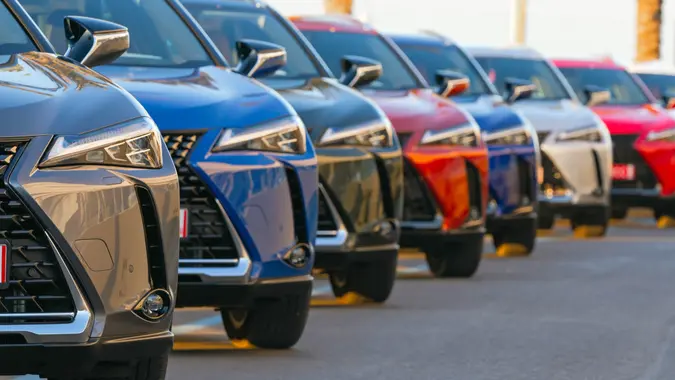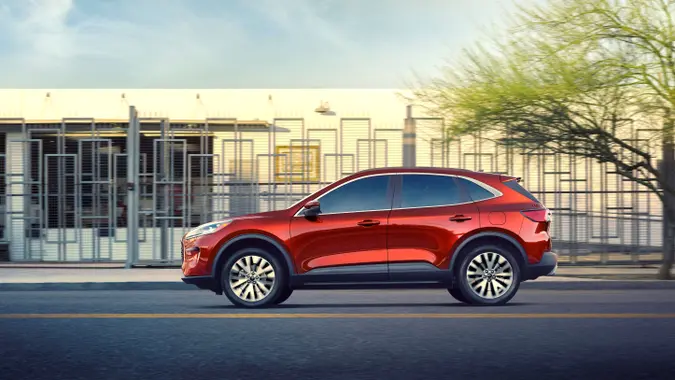4 Car Brands That Would Be More Expensive If They Were Made in the US

Commitment to Our Readers
GOBankingRates' editorial team is committed to bringing you unbiased reviews and information. We use data-driven methodologies to evaluate financial products and services - our reviews and ratings are not influenced by advertisers. You can read more about our editorial guidelines and our products and services review methodology.

20 Years
Helping You Live Richer

Reviewed
by Experts

Trusted by
Millions of Readers
If you’re considering purchasing a new vehicle, what impact could tariffs have on your purchase? Should you expect to pay more by the end of the year? These are questions that might be on your mind as you set your budget and start the search for your next vehicle.
These four car brands would likely be more expensive if they were made in the U.S. — here’s why, so you can make an informed purchase decision.
Kia
Kia vehicles are mainly manufactured in South Korea and Slovakia, with additional manufacturing plants in China, India, Mexico and Vietnam. President Donald Trump has announced a 25% across-the-board tariff on South Korea, which has been temporarily reduced to 10% for 90 days.
Even if Kia were to open more plants in the United States, there are stark labor rate differences. The average manufacturer in South Korea earns between 9,000 won and 15,000 won, which is $6 to $11. For reference, the average hourly rate in manufacturing in the U.S. was $28.92 as of March 2025.
“One of the main reasons why Kia vehicles would be more expensive is the cost of labor — domestic employees earn considerably more in pay compared to South Korean workers,” said Alex Black, chief marketing officer at EpicVIN. “Additionally, U.S. manufacturing facilities contend with tighter regulations and higher expenses for such things as protective gear, benefits and even energy.”
Hyundai
Like Kia, Hyundai’s largest manufacturing plant is in South Korea. This plant produces 1.6 million vehicles annually.
Moving operations to the United States would come with unfavorable price differences, which would likely be passed down to consumers. Alongside the higher average hourly rate in the U.S., the cost of raw materials would likely increase when sourcing U.S. goods.
Volkswagen
Volkswagen’s home base is in Germany, with factories in Europe, South America and Africa. Similar to South Korea, Germany is facing a 25% tariff.
The average hourly rate for a manufacturing worker in Germany is 17 euros, which equates to about $19. Couple the higher hourly rate with more expensive raw materials, and producing Volkswagen vehicles in the United States could be costly.
“VW manufactures a lot of its automobiles in countries such as Mexico, where production costs are lower,” said Black. “If they had to switch entirely to the U.S., from labor to raw materials to taxes, all of that would add to the price. That budget Jetta would no longer be so budget friendly.”
Volvo
Sweden is home to Volvo, with other facilities in China, Belgium and the U.S.
Following the same trend, the average hourly rate for a manufacturing worker in Sweden is much lower than in the United States at 141 krona per hour or $14. Solely manufacturing Volvo in the United States could result in higher prices due to increased labor rates and costs for raw materials.
Editor’s note on political coverage: GOBankingRates is nonpartisan and strives to cover all aspects of the economy objectively and present balanced reports on politically focused finance stories. You can find more coverage of this topic on GOBankingRates.com.
 Written by
Written by  Edited by
Edited by 

























